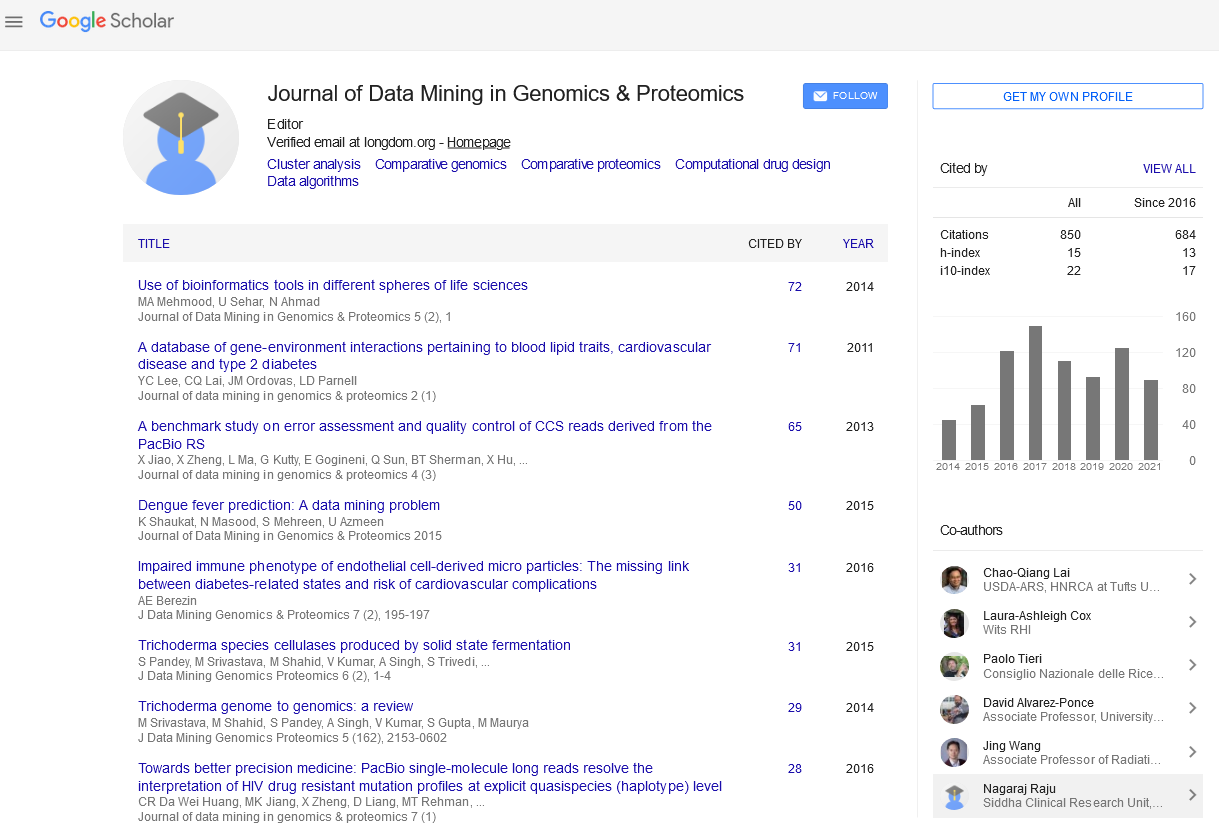PMC/PubMed Indexed Articles
Indexed In
- Academic Journals Database
- Open J Gate
- Genamics JournalSeek
- JournalTOCs
- ResearchBible
- Ulrich's Periodicals Directory
- Electronic Journals Library
- RefSeek
- Hamdard University
- EBSCO A-Z
- OCLC- WorldCat
- Scholarsteer
- SWB online catalog
- Virtual Library of Biology (vifabio)
- Publons
- MIAR
- Geneva Foundation for Medical Education and Research
- Euro Pub
- Google Scholar
Useful Links
Share This Page
Journal Flyer

Open Access Journals
- Agri and Aquaculture
- Biochemistry
- Bioinformatics & Systems Biology
- Business & Management
- Chemistry
- Clinical Sciences
- Engineering
- Food & Nutrition
- General Science
- Genetics & Molecular Biology
- Immunology & Microbiology
- Medical Sciences
- Neuroscience & Psychology
- Nursing & Health Care
- Pharmaceutical Sciences
Abstract
Model-Free Inference for ChIP-Seq Data
Mingqi Wu, Monique Rijnkels and Faming Liang
Due to its higher resolution mapping and stronger ChIP enrichment signals, ChIP-seq tends to replace ChIP-chip technology in studying genome-wide protein-DNA interactions, while the massive digital ChIP-seq data present new challenges to statisticians. To date, most methods proposed in the literature for ChIP-seq data analysis are model based, however, finding a single model workable for all datasets is impossible, given the complexity of biological systems and variations generated in the sequencing process. In this paper, we present a model-free approach, the so-called MICS (Model-free Inference for ChIP-Seq), for ChIP-seq data analysis. MICS has a few advantages over the existing methods: Firstly, MICS avoids assumptions for the data distribution, and thus it maintains high power even when model assumptions for the data are violated. Secondly, MICS employs a simulation-based method in estimating the false discovery rate. Since the simulation-based method works independently of ChIP samples, MICS can perform robustly to variety of ChIP samples; it can produce accurate identification of peak regions, even for those where the enrichment is weak. Thirdly, MICS is very efficient in computation, which takes only a few seconds on a personal computer for a reasonably large dataset. In this paper, we also present a simple semi-empirical method for simulating ChIP-seq data, which allows a better assessment of performance of different approaches for ChIP-seq data analysis. MICS is compared with several existing methods, including MACS, CCAT, PICS, BayesPeak and QuEST, based on real and simulated datasets. The numerical results indicate that MICS can outperform others. Availability: An R package called MICS is available at http://www.stat.tamu.edu/~mqwu.


